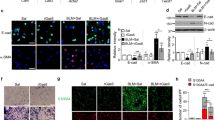Abstract.
Objective: This study evaluates the action of celecoxib and rofecoxib, two selective cyclooxygenase-2 (COX-2) inhibitors in two acute models of inflammation, carrageenan (Cg)-induced rat pleurisy, and paw oedema formation.¶Material: Male Wistar rats (N = 4–10 per group) were used. A fixed volume of PBS or carrageenan was injected into the pleural cavity or into the paw. Furthermore, the myeloperoxidase (MPO) activity and the levels of nitrite/nitrate (NOx), interleukin-1β (IL-1β), tumor necrosis factor-α (TNF-α) and PGE2 were also assessed in the paw tissue or in pleural exudate.¶Results: Dexamethasone (DEX, 0.5 mg kg–1, s.c., –4 h) and indomethacin (INDO, 3 mg kg–1, p.o., –1 h) suppressed Cg-induced pleural exudate accumulation by 84 and 77% and inflammatory cell influx by 66 and 47%, respectively. In contrast, celecoxib (CLX, 10 mg kg–1, p.o., –1 h) or rofecoxib (RFX, 10 mg kg–1, p.o., –1 h) only reduced the Cg-induced pleural exudate volume by 44 and 40%, respectively, but had no significant effect over inflammatory cell influx. At the same doses used for pleurisy, DEX, INDO, CLX, RFX and SC-560 (a selective COX-1 inhibitor, 40 mg kg–1, p.o., –1 h), inhibited the Cg-induced paw oedema by 49, 31, 21, 21 and 17%. DEX, INDO or SC-560 reduced the level of MPO by 71, 78 and 59%, while CLX or RFX produced a small, but significant increase (28 or 16%) in MPO activity. In the rat model of pleurisy, PGE2 levels in cell-free exudates were significantly attenuated by 91, 89, 57 and 65% in animals treated with DEX, INDO, CLX or RFX. In contrast, INDO reduced significantly the whole blood TXB2 synthesis (59%) while DEX and INDO reduced the pleural content of NOx significantly. Treatment of animals with CLX or RFX did not alter the content of pro-inflammatory cytokines IL-1β or TNF-α in the pleural exudate, but CLX reduced IL-1β levels in the rat paw tissue and RFX increased TNF-α in this tissue.¶Conclusion: Together these results provide consistent evidence indicating that the selective COX-2 inhibitors CLX and RFX, in contrast to DEX, INDO or SC-560, despite reducing greatly the Cg-induced pleural exudation, PGE2 content and paw oedema have only partial acute anti-inflammatory properties in two different rat acute models of inflammation.
Similar content being viewed by others
Author information
Authors and Affiliations
Additional information
Received 19 February 2002; returned for revision 22 April 2002; accepted by E. Neugebauer 27 August 2002
RID="*"
ID="*"Correspondence to: J. B. Calixto
Rights and permissions
About this article
Cite this article
Pinheiro, R., Calixto, J. Effect of the selective COX-2 inhibitors, celecoxib and rofecoxib in rat acute models of inflammation. Inflamm. res. 51, 603–610 (2002). https://doi.org/10.1007/PL00012435
Issue Date:
DOI: https://doi.org/10.1007/PL00012435




